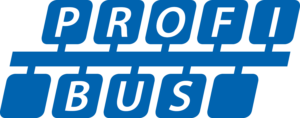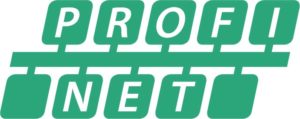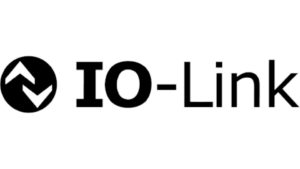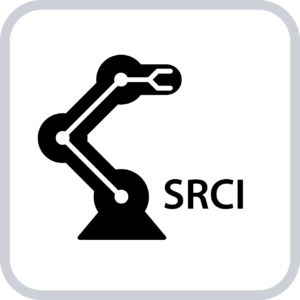 Open, manufacturer-independent standards were and are essential for interfaces in technical systems. This applies in particular to industrial automation, where PROFIBUS was one of the first standards to be used. The founding of the PROFIBUS User Organization (PNO) on 11 December 1989 was preceded by an initiative of the German government, which at the time was aimed at strengthening information technology in Germany and within the framework of which the publicly funded “Fieldbus” project was launched with the goal of providing an open and standardized manufacturer-independent communication system, in which the first version of PROFIBUS was created. Due to its success, leading companies and research institutes founded the PNO with the support of the ZVEI in order to ensure the long-term further development, standardization and international distribution of PROFIBUS. To strengthen the technology development and to support the international distribution, PROFIBUS International (PI) was founded consisting today of 24 Regional PI Associations.
Open, manufacturer-independent standards were and are essential for interfaces in technical systems. This applies in particular to industrial automation, where PROFIBUS was one of the first standards to be used. The founding of the PROFIBUS User Organization (PNO) on 11 December 1989 was preceded by an initiative of the German government, which at the time was aimed at strengthening information technology in Germany and within the framework of which the publicly funded “Fieldbus” project was launched with the goal of providing an open and standardized manufacturer-independent communication system, in which the first version of PROFIBUS was created. Due to its success, leading companies and research institutes founded the PNO with the support of the ZVEI in order to ensure the long-term further development, standardization and international distribution of PROFIBUS. To strengthen the technology development and to support the international distribution, PROFIBUS International (PI) was founded consisting today of 24 Regional PI Associations.
 This goal has been achieved to an even greater extent than the founding members had hoped for at the beginning of the PNO’s existence, as PROFIBUS is still the world market leader in classic fieldbus systems today, which is impressively demonstrated by the notarized products launched on the market every year. This is thanks to persistent further development based on user requirements. With the trend towards Ethernet in automation, the PNO has successfully completed a paradigm shift to the benefit of manufacturers and users even after 10 years of PROFIBUS with the introduction of PROFINET in 2001. This was an important step towards vertical communication, which is a prerequisite for efficient digitalization.
This goal has been achieved to an even greater extent than the founding members had hoped for at the beginning of the PNO’s existence, as PROFIBUS is still the world market leader in classic fieldbus systems today, which is impressively demonstrated by the notarized products launched on the market every year. This is thanks to persistent further development based on user requirements. With the trend towards Ethernet in automation, the PNO has successfully completed a paradigm shift to the benefit of manufacturers and users even after 10 years of PROFIBUS with the introduction of PROFINET in 2001. This was an important step towards vertical communication, which is a prerequisite for efficient digitalization.
 IO-Link, an open communication system that still has no competitor, was developed to integrate intelligence into production automation sensors. Both PROFINET and IO-Link are leading on the global market, as evidenced not only by the notarized counting by the PI, but also by other market surveys. There are a number of extremely important technology and marketing projects that have cemented their long-term success. Firstly, three important milestones should be mentioned here with regard to the fields of application. These include the introduction of the profile for PA devices, enabling PROFIBUS and PROFINET to gain a foothold in process automation. In addition, the expansion of communication to include features such as the so-called DP-V2 functions for PROFIBUS and IRT for PROFINET, which enable use in motion control, coupled with the specification of the PROFIdrive profile, in which the functions of drives were standardized. Last but not least, PROFIBUS and PROFINET have also fulfilled the industrial requirements for safety with the specification of PROFIsafe.
IO-Link, an open communication system that still has no competitor, was developed to integrate intelligence into production automation sensors. Both PROFINET and IO-Link are leading on the global market, as evidenced not only by the notarized counting by the PI, but also by other market surveys. There are a number of extremely important technology and marketing projects that have cemented their long-term success. Firstly, three important milestones should be mentioned here with regard to the fields of application. These include the introduction of the profile for PA devices, enabling PROFIBUS and PROFINET to gain a foothold in process automation. In addition, the expansion of communication to include features such as the so-called DP-V2 functions for PROFIBUS and IRT for PROFINET, which enable use in motion control, coupled with the specification of the PROFIdrive profile, in which the functions of drives were standardized. Last but not least, PROFIBUS and PROFINET have also fulfilled the industrial requirements for safety with the specification of PROFIsafe.
PROFIBUS and PROFINET are the only communication systems that cover the entire spectrum of industrial automation, from production automation to process automation and motion control applications, including safety. The challenge here was and is to “reconcile” the very different requirements and to create a communication system that is lean enough to be implemented in products and at the same time meet the requirements of the different fields of application. A particular challenge with the introduction of PROFINET was to convince the manufacturers, who at the time had increasing sales of PROFIBUS products, of the additional long-term benefits of integrating PROFINET into their products.
However, the measure for a comprehensive implementation of Industry 4.0 is directly related to the two factors of consistent digitalization and standardized horizontal and vertical data and information exchange. With PROFINET, PI provides a robust, real-time communication technology for OT and a powerful, secure platform for vertical communication for data exchange with production control through to cloud services. Standardized data formats play a key role here. It was therefore logical for PI to develop these aspects in cooperation with the OPC Foundation. This resulted in a series of companion standards in which open information models are specified.
 Highly automated production is not possible without robotics. However, robots are controlled by PLCs or industrial PCs to carry out production steps. SRCI provides an open interface with standardized commands so that robots from any manufacturer can be specifically controlled by controllers from any supplier without extensive programming work.
Highly automated production is not possible without robotics. However, robots are controlled by PLCs or industrial PCs to carry out production steps. SRCI provides an open interface with standardized commands so that robots from any manufacturer can be specifically controlled by controllers from any supplier without extensive programming work.
The changed environment brought about by digitalization has significantly altered the focus in terms of technological developments. On the one hand, the strong focus on communication has given way to an increased thematic breadth, which, in addition to the communication view, refers to different application aspects as well as adopting a cross-level perspective.
For example, the PI has taken over the hosting of omlox, a positioning technology for indoor applications that helps to increase the efficiency of industrial production. Increasing the flexibility of complex production facilities when changing over products can be enhanced by a modular design of the production facility, as this significantly reduces engineering costs.
 NAMUR and ZVEI have entrusted the PI with hosting the further development of the MTP (Module Type Package) technology. MTP can be used to create a modular system consisting of standardized interface elements and their semantic description. MTPs contain a manufacturer-neutral, functional description that can be used to integrate process modules into the orchestration level.
NAMUR and ZVEI have entrusted the PI with hosting the further development of the MTP (Module Type Package) technology. MTP can be used to create a modular system consisting of standardized interface elements and their semantic description. MTPs contain a manufacturer-neutral, functional description that can be used to integrate process modules into the orchestration level.
Digitalization depends on efficient and secure vertical communication that does not affect the automation processes. In order to enable the structured convergence of IT and OT systems required for this, NAMUR and the ZVEI have drawn up requirements for NOA (Namur Open Architecture). The aim of NOA is to provide a standardized channel for the transmission of required digital data on a parallel second channel from the field for the purposes of process optimization and predictive maintenance. NAMUR and the ZVEI have entrusted the hosting of NOA to PI.
 Security is playing an increasingly important role in Ethernet-based communication and is becoming a strategic factor in companies’ product development. A current challenge is to meet the security requirements that have grown rapidly in recent years. PI has initiated corresponding activities in the working groups. On the one hand, corresponding extensions have been implemented in the PROFINET specification. PI is also in the process of expanding the certification test for PROFINET to include PROFINET security test scenarios (including the security classes).
Security is playing an increasingly important role in Ethernet-based communication and is becoming a strategic factor in companies’ product development. A current challenge is to meet the security requirements that have grown rapidly in recent years. PI has initiated corresponding activities in the working groups. On the one hand, corresponding extensions have been implemented in the PROFINET specification. PI is also in the process of expanding the certification test for PROFINET to include PROFINET security test scenarios (including the security classes).
Through continuous dialogue with users, PI experts ensure that suggestions for functional enhancements, improvements and optimization of the technologies are brought to the relevant working groups so that appropriate measures and implementation work can be taken. This principle is one of the foundations for the long-term success of the technologies.
One of the reasons for the PI’s success is that it has established Competence Centers, Training Centers and test laboratories that offer services geared to the respective region for the implementation and application of the technologies, quality training for users and product quality assurance.
The main means of ensuring the interoperability of products from different manufacturers is the established certification system, which includes a committee with a number of working groups that translate requirements agreed in marketing into test specifications, the implementation of test tools controlled by expert groups, and approved test laboratories that test products for compliance with specifications using approved test tools. This is flanked by the regular implementation of plugfests.
The establishment of powerful marketing working groups and the decision to establish regional organizations on all continents, which can optimally align marketing with regional needs, were decisive factors in the global expansion.
Driven by digitalization, PROFINET will continue to shape the future of industrial automation. Today, PROFINET already has a wide range of functions to support both the automation task, e.g. in terms of real-time capability, and vertical communication, for example via the Companion Specifications. This functionality is expanded on the basis of new user requirements and by using available new technologies. Examples include SPE/APL, TSN and virtual PLCs. The aim here is to make the digitalization of automation concrete and as easy to handle as possible.

Dr. Peter Wenzel
Executive Director, PROFIBUS Nutzerorganisation e.V.
